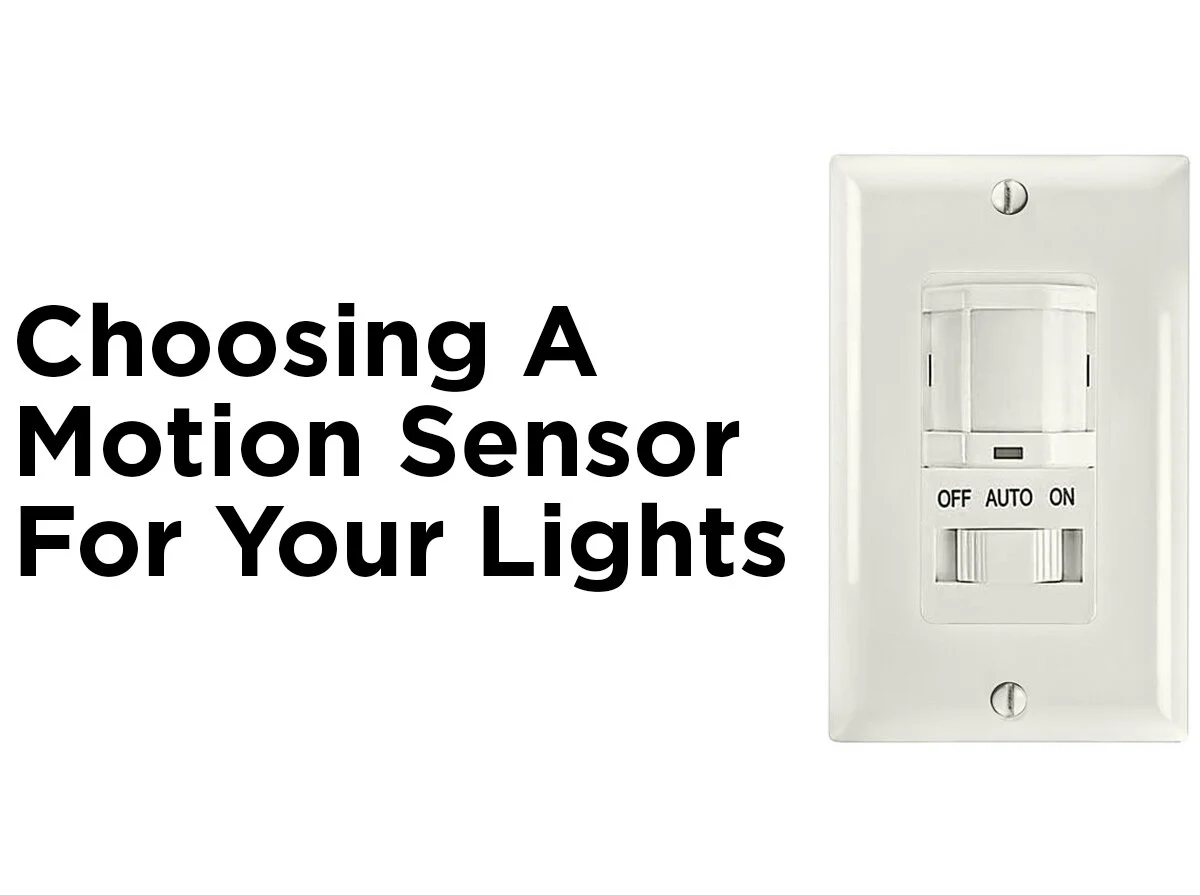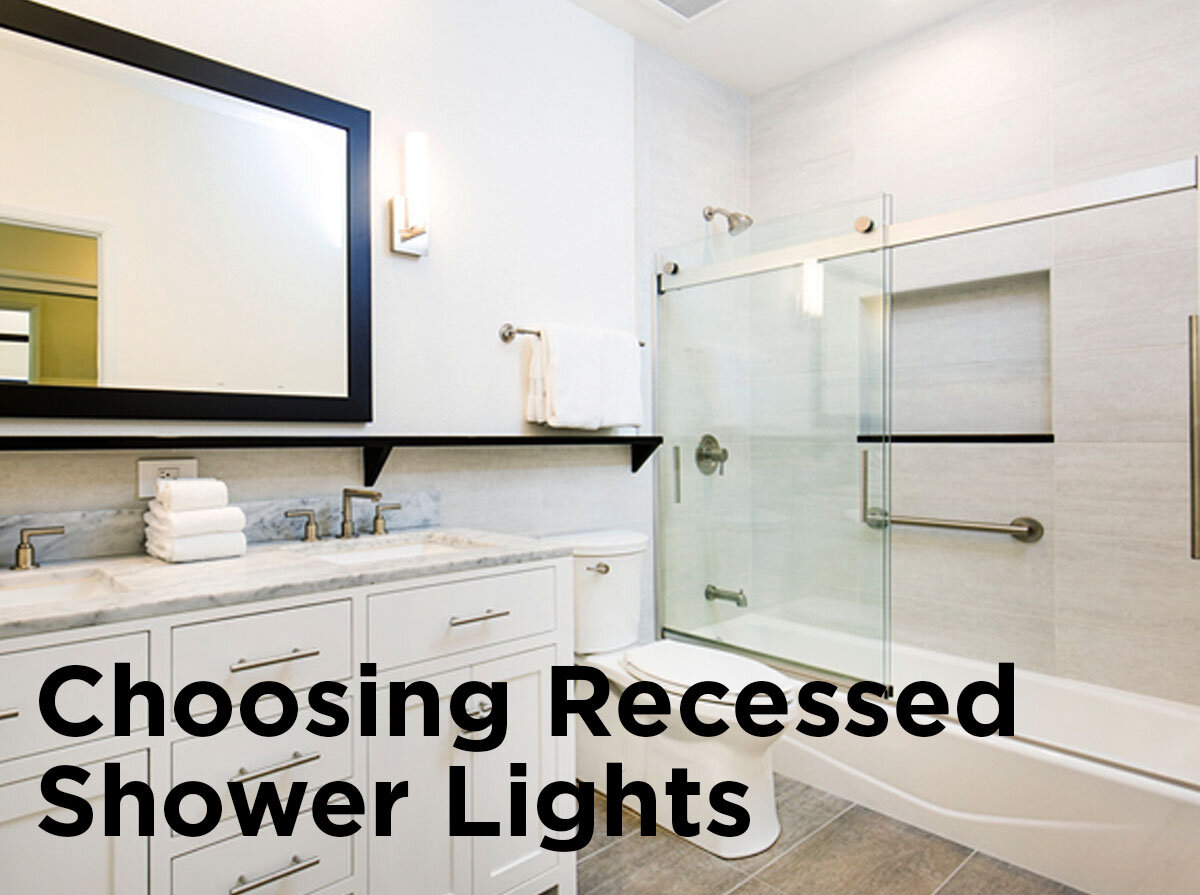Choosing a Motion Sensor for your Lights
So, you’ve finally “seen the light” and realized that motion sensors are a good fit for your home. They are not only useful for detecting unwanted visitors—they can also save you the trouble of turning lights on when your hands are full as well as help you avoid the costs of wasted energy when you forget to turn lights off. But with the variety of options available, how do you choose the right motion sensor for your lights?
Motion sensors can first be divided by whether they are an occupancy sensor or a vacancy sensor, and second by whether they use passive infrared (PIR), ultrasonic, or dual-technology electronics. Both occupancy and vacancy sensors can detect occupants by using any of the latter three technologies, and they come in a variety of shapes, sizes and mounting styles. The needs of your space will dictate whether an occupancy sensor or a vacancy sensor is more appropriate, as well as what kind of occupancy/vacancy sensor you need.
Occupancy Sensors and Vacancy Sensors
Occupancy sensors turn lights on when a person enters a room and off again when they exit. Occupancy sensors are especially useful in places where your hands might be full when entering the room, such as when carrying a laundry basket into a laundry room or groceries into a foyer. They are also ideal for task lighting applications, such as under-cabinet lighting over counters or workbenches, by turning (and keeping) lights on only when you’re using your workspace. Many outdoor security lights also use occupancy sensors to alert you to the presence of visitors.
Vacancy sensors, on the other hand, require a user to manually turn them on before automatically shutting them off after a person exits. They are a better option in areas where you’re mainly just worried about forgetting to turn off your lights, such as the bedroom, bathroom, closet, kitchen, or living room.
PIR, Ultrasonic, and Dual-Technology Sensors
PIR sensors work by sensing the difference between the heat emitted by moving occupants and the ambient heat of a room. They require a direct line of sight between the sensor and the occupants in a space to activate the lights they’re synced with. In some situations, this can serve as an advantage, such as if you want to be able to strictly define the sensor’s coverage (think back to task lighting). This makes them particularly suitable for enclosed spaces, wall-switch replacements, high-ceiling areas, and spaces in which it is necessary to mask unwanted detection in certain areas. Examples of these spaces include private offices, hallways, storage closets, and outdoor areas.
Ultrasonic sensors work by sending out ultrasonic sound waves into a space and measuring the speed at which they return. Unlike passive-infrared sensors, they cover an entire space and do not require a direct line of sight.They are highly suitable for spaces in which a line of sight is not possible, such as partitioned spaces or spaces requiring a higher level of sensitivity, such as restrooms, open offices, enclosed hallways, and stairways.
Dual-technology sensors use both PIR and ultrasonic technologies, activating the lights only when both technologies detect the presence of occupants. This setup virtually eliminates the possibility of false-on or false-off problems. Appropriate applications include classrooms, conference rooms and other places where a higher degree of detection is desirable.
Summary
Occupancy sensors turn lights on and off.
Vacancy sensors only turn lights off, requiring you to manually turn them on first.
PIR sensors require a direct line of sight and are not preferable in spaces where levels of motion are low or where there are obstacles blocking the sensor’s view.
Ultrasonic sensors do not require a direct line of sight, meaning they are able to cover an entire area, but are not preferable in rooms with high ceilings or places with a high level of vibration or airflow due to echoes and amplified noises.
Dual-technology sensors require both technologies (PIR and ultrasonic) to detect occupants, eliminating false-on or off situations.
Left with any lingering questions about motion sensors? Let us know! We’d love to help. Ask away below in the comments or send us a line on Facebook, Twitter, LinkedIn, Pinterest, or Instagram!






